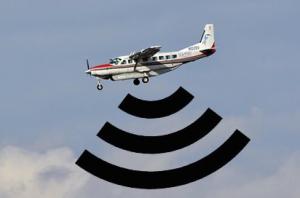SurveillanceAnaheim police employed Stingray surveillance devices
Police in Anaheim, California have been using Stingray surveillance devices, as well as employing the more intrusive cousin, “dirtboxes,” during active investigations, without the knowledge of residents. More than 400 new documents obtained by the American Civil Liberties Union show that the department has requested funds for the technology, and that it has been using the devices since at least 2009.

U.S. Marshals Service has been using airborne “dirtboxes” to collect data on mobile phones // Source: harvard.edu
Police in Anaheim, California have been using Stingray surveillance devices, as well as employing the more intrusive cousin, “dirtboxes,” during active investigations, without the knowledge of residents. The Verge reports that more than 400 new documents obtained by the American Civil Liberties Union show that the department has requested funds for the technology, and that it has been using the devices since at least 2009.
Dirtboxes have been used during aerial missions to capture data on thousands of phones at once. The Verge notes that some versions can decrypt communications, making it possible for the police to eavesdrop on conversations, e-mails, and text messages.
One of the e-mails obtained by the ACLU says the Dirtbox was used during narcotics investigations.
The Anaheim police purchased multiple Stingray devices, including one that can monitor LTE networks. The department also bought a hand-held surveillance gear which assists in locating phone and LTE signals when phones are in more secure locales, like inside a building.
The Verge notes that the surveillance technology the Anaheim police bought allowed it to monitor more than local residents. The ACLU-obtained documents show that the department allowed police departments all over Orange County to use the surveillance technology. Three million people live in Orange County, and sixteen million people visit Disneyland every year – meaning that nineteen million people could have been exposed to the surveillance devices.
The ACLU does note, however, that the documents do say that “court orders” and “court approvals” were obtained before deploying them – although the civil rights groups adds that this does not necessarily mean a warrant under probable cause was issued.
The surveillance technology has been the subject of growing unease ever since the Electronic Frontier Foundation (EFF) and ACLU brought it to light in a 2012 case. The Department of Justice and the Department of Homeland Security have since committed themselves to seek warrants before deploying the technology. Individual states have also moved to regulate the use of the technology.
